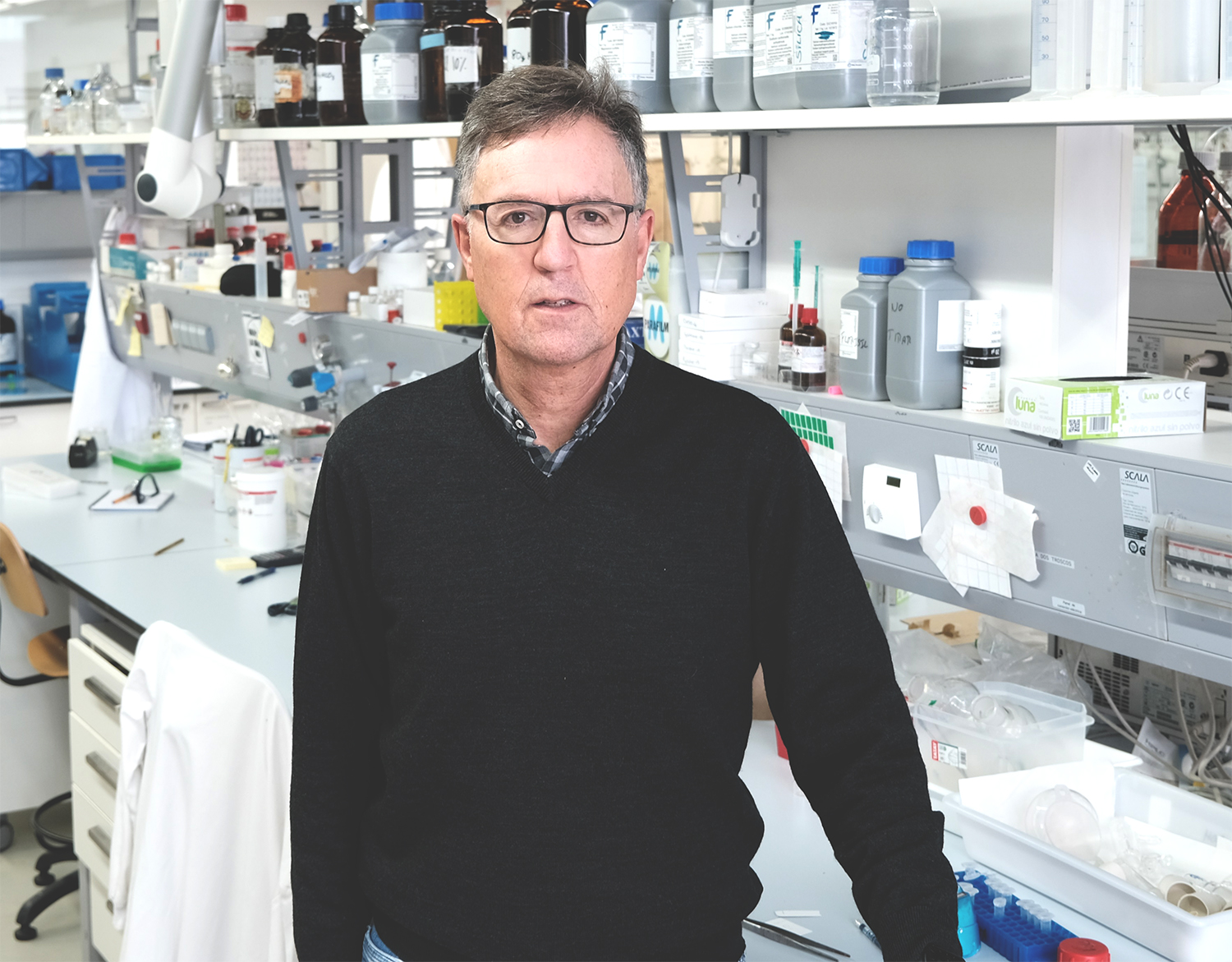Cancer stem cells (CSCs) are a subpopulation of tumor cells primarily responsible for tumor initiation, metastasis and therapy resistance. Many chemotherapies used to fight cancer fail to eliminate CSCs in part because of their high plasticity, a property used by CSCs to adapt, resist treatment and continue to spread. However, CSCs depend on mitochondrial respiration to survive and evade the immune system's defenses, which the investigators believe represents a metabolic Achilles' heel of these cells.
The group led by Prof. José Luis Mascareñas at the Centro Singular de Investigación en Química Biolóxica e Materiais Moleculares (CiQUS) has been working together with the team led by Dr. Bruno Sainz at the Instituto de Investigaciones Biomédicas "Alberto Sols" (IIBM CSIC-UAM) on the identification of new compounds that alter and modulate mitochondrial respiration in cancer stem cells, decreasing their potential to promote and regenerate tumors. Results obtained so far in pancreatic CSCs and in preclinical models of patient-derived xenografts demonstrate potent antitumor activity, and in vivo studies suggest low toxicity associated with these metal-like compounds.
This project has just received a new financial boost through the CaixaResearch Consolidate(link is external) program of the "la Caixa" Foundation, a call that supports innovative and mature projects in the area of health, and which have a solid valorization plan. The new grant will allow the team to carry out a series of additional studies with the aim of validating the technology in preclinical models of different tumors driven by CSCs, and thus facilitate its access to the market. The proposal led by Prof. Mascareñas is one of the five biomedical research projects that have been selected in the second round of this call, at the national level. In addition to receiving a financial support of 300,000€, all of the selected projects will have the help of mentors to define their development and commercialization plans in a personalized way, and expert support in technology transfer, financing tools or negotiations.
Dr. Sainz's group(link is external) has generated important advances in the area of cell biology, and is currently exploring ways to alter the metabolic requirements of CSCs. The MetBioCat(link is external) group led by Prof. Mascareñas is already a reference group in the area of biological chemistry, including the design of ruthenium-based metal complexes that are able to act selectively on DNA. Both laboratories form a multidisciplinary team with extensive experience whose collaboration dates back to an IGNICIA project of the Xunta de Galicia.
The new project will seek to validate an existing technology in preclinical models of different tumors in order to bring the anti-CSC compound to the clinical market | CiQUS

José Luis Mascareñas is the Project Leader of the new grant CaixaResearch Consolidate
References
Rodríguez J, Mosquera J, Couceiro JR, Vázquez ME, Mascareñas JL. Ruthenation of Non-stacked Guanines in DNA G-Quadruplex Structures: Enhancement of c-MYC Expression. Angew. Chem. 128, 15844-15847 (2016). DOI: 10.1002/anie.201607965
Valle S, Alcalá S, Martin-Hijano L, Cabezas-Sáinz P, Navarro D, Muñoz ER, Yuste L, Tiwary K, Walter K, Ruiz-Cañas L, Alonso-Nocelo M, Rubiolo JA, González-Arnay E, Heeschen C, Garcia-Bermejo L, Hermann PC, Sánchez L, Sancho P, Fernández-Moreno MÁ, Sainz B Jr. Exploiting oxidative phosphorylation to promote the stem and immunoevasive properties of pancreatic cancer stem cells. Nat Commun 11, 5265 (2020). DOI: 10.1038/s41467-020-18954-z